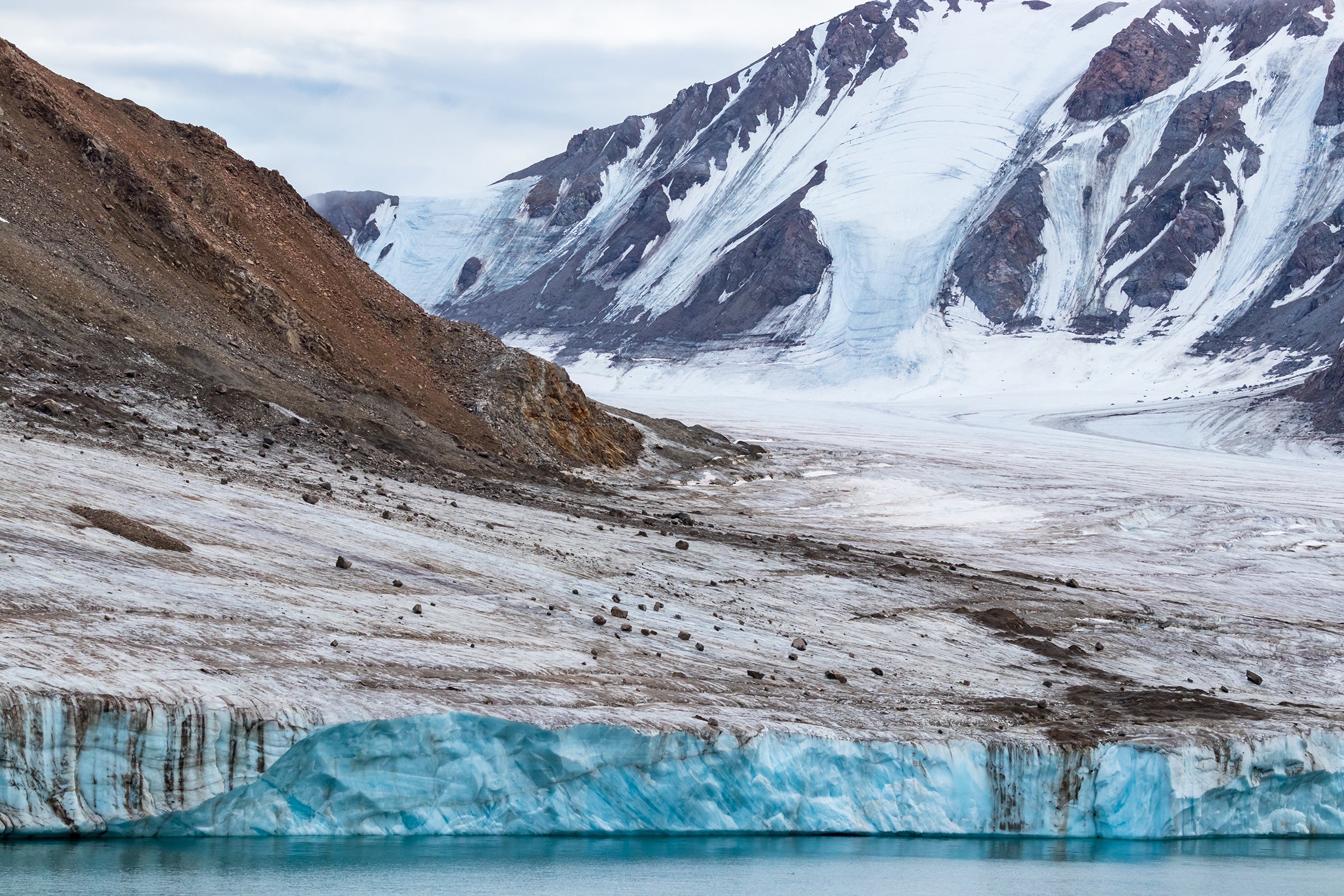Ellesmere Island in the Canadian Arctic is a treeless, rocky and bitterly cold wilderness, with large parts covered by thick glaciers. But some 52 million years ago it had dense forests and a steamier climate more like present-day Savannah, Ga. And now a fossil finding reveals it was home to two newly identified species of primatelike mammals, researchers reported on Wednesday in PLOS ONE. These animals’ success in colonizing the rapidly warming Arctic of the past could help scientists better understand how species might shift amid the current, human-caused climate emergency.
The fossils date from early in the Eocene epoch, when Earth was home to ancient relatives of many modern mammals, including tapirs, hippopotamuses and humans. One of our own long-lost family members from this time is the now extinct genus Ignacius, the subject of the new study. “We still don’t know exactly where” Ignacius fits in relation to modern primates, says the study’s lead author Kristen Miller, a University of Kansas evolutionary biologist. But scientists know these creatures fall somewhere within the broader group that includes primates and primatelike animals such as flying lemurs. In Miller’s artistic depiction of one example of Ignacius—the first ever made for the genus—you’d be forgiven for thinking you were looking at a squirrel.
Most Ignacius species lived in the middle latitudes, such as what is now the contiguous U.S. The two species described by Miller and her colleagues are the first ever found in the Arctic. Specimens of the mammals, now dubbed Ignacius mckennai and Ignacius dawsonae, were originally collected in the 1970s from Ellesmere Island by pioneering paleontologist Mary Dawson. But they were not formally described or understood to be undiscovered species until now.

The fossils Miller and her colleagues used in their study include many teeth and some jawbones but unfortunately no complete skeletons. Still, it’s clear that I. mckennai and I. dawsonae evolved traits that were not seen in their lower-latitude cousins. These differences helped the two species cope with a warmer but still uniquely challenging Arctic environment, says study co-author Christopher Beard, a vertebrate paleontologist at the University of Kansas. The adaptations include teeth with craggy surfaces, “like if you took a bedsheet and wrinkled it all up,” Miller says. This adaptation could have helped I. mckennai and I. dawsonae eat things like hard seeds and tree bark, which were likely the only types of food available during the Arctic’s notorious periods of extended winter darkness, during which green plants or insects would not be plentiful. Both species are also much larger than other Ignacius species—in keeping with the trend that animals at the poles tend to be bigger than their relatives in warmer climates because their greater volume, compared with their surface area, helps them retain heat. Even in the balmy early Eocene, the poles still experienced colder temperatures relative to the equator.
As exciting as the presence of these two Ignacius species on Ellesmere Island is, scientists are also interested in what isn’t found there—and why. “There are some absences that are really interesting,” Miller says. “Early horses, Hyracotherium, are superabundant at midlatitudes. But they don’t make it” to the Arctic. Other absent animals include early hooved mammals called condylarths, as well as Ignacius’s closest relatives. Other “primates and close relatives of primates … have never been found” on Ellesmere Island, despite being common elsewhere in the world, Beard notes. This means that while some animals from lower latitudes were able to colonize the Eocene Arctic as it heated up, “not everybody could do it,” he says—even animals that otherwise preferred warm temperatures.
Learning about how species responded to warming events in the past is invaluable because global temperatures are now rising faster than anything scientists can find in the fossil record, says Jaelyn Eberle, a vertebrate paleontologist at the Museum of Natural History at the University of Colorado Boulder, who provided specimens and comments for the study but was not directly involved in the work. “If we’re to predict how a biota will do in an ice-free Arctic”—which could happen during summers as early as 2035—she says, “we need to look at these past intervals.” While the exact traits that make a species able to move into a warming Arctic are still a mystery, Eberle suggests that being able to eat many different kinds of food is one characteristic that could make it easier.
Asked when more species might be able to successfully shift into the Arctic, Beard says that is already happening. “Red foxes are colonizing the Arctic, and they’re outfoxing the Arctic foxes,” he says. As climate change lights a fire under animals and moves them northward, “the whole thing is going to be incredibly dynamic, with colonization, diversification and adaptation all happening”—along with extinctions. But by studying how ecosystems changed in the past, hopefully we can understand a bit more about what we’re in for in the future.







